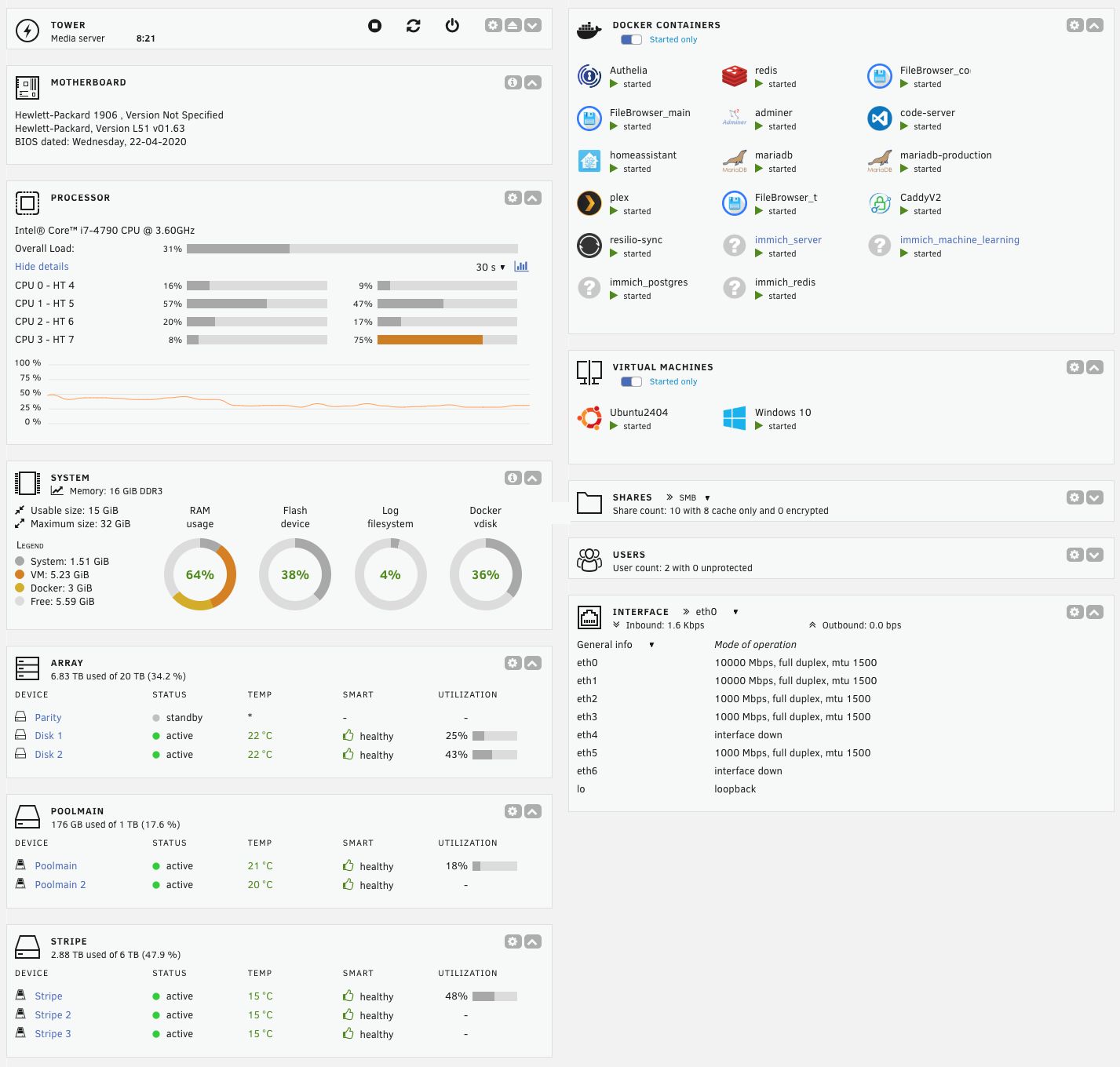I originally ran a Mac Mini and an OWC drivebay for my NAS needs, but with another server also running Windows10 for HyperV and as well as needing something to run Docker on… it was time for a change.
Enter Unraid.
I had an Unraid license from 2010 from back when it was V4 and did nothing other than a JBOD of sorts with its storage array.
When I installed it again recently (2024), it was V6 and supported Virtual Machines and Docker, making it a perfect contender for my server. I’ve since updated it to V7 as of this post.
The donor machine was an HP Z230 SFF i7 4790 16GB, and although I intended to upgrade this, it’s run so well for the past 8 months, that I’m not going to change it unless something forces me to.
I had a couple of extra low-profile Intel NIC cards as well which I threw in there for good measure; a dual 10GbE, and a quad 1GbE, which allows me to segregate VLAN usage nicely to dedicated ports.
Cutting to the chase, here’s my Unraid Dashboard:

You may well notice the 8 drives there; the Z230 has 5(?) SATA ports, and I’ve utilised another 3 SATA ports on a no-name SATA card from Amazon. This card has worked without issue since the start.
The main reason to get Unraid was as NAS for my work, and as I work on macOS, I needed Unraid to play nice file sharing with SMB to the Mac, and the trick with this is to have the share within Unraid as ‘exclusive’. From memory, this is as simple as creating the shared folder in Unraid terminal (mkdir etc), rather than the GUI. Once the folder is created on whatever pool/array/drive you have, Unraid automatically makes that a share, and as such, you can enable ‘Exclusive Access’ mode.
Before Exclusive Access mode, shares would be so slow to access from my Mac, that I relied heavily on Resilio to share folders across the LAN.
With Exclusive Access enabled, I can browse and access Unraid SMB shares with ease. Hoorah!
In case you’re wondering what the Win10 VM does; it runs Backblaze, which in turn looks at some bind folders of my work within the Unraid server.
In fact, to summarise the drives:
1 x Array (3 x 10TB HDD, xfs), which is for Plex, and archival of Work files.
1 x Pool (2 x 1TB SSD, btrfs, mirrored), which are for the Docker containers, VMs and everything else Unraid does in terms of service duties.
1 x Stripe (3 x 2TB SSD, btrfs, striped), these are my main data drives for Work, and this is synced to the Array every night with RSync for redundancy.
The array is also mounted as a bind using VirtFS in the Windows 10 VM which backs that up in Backblaze.
It all made sense at the time when I built the server, and so far, Unraid has done all that I require of it without issue.
A+ to Unraid!

Leave a Reply